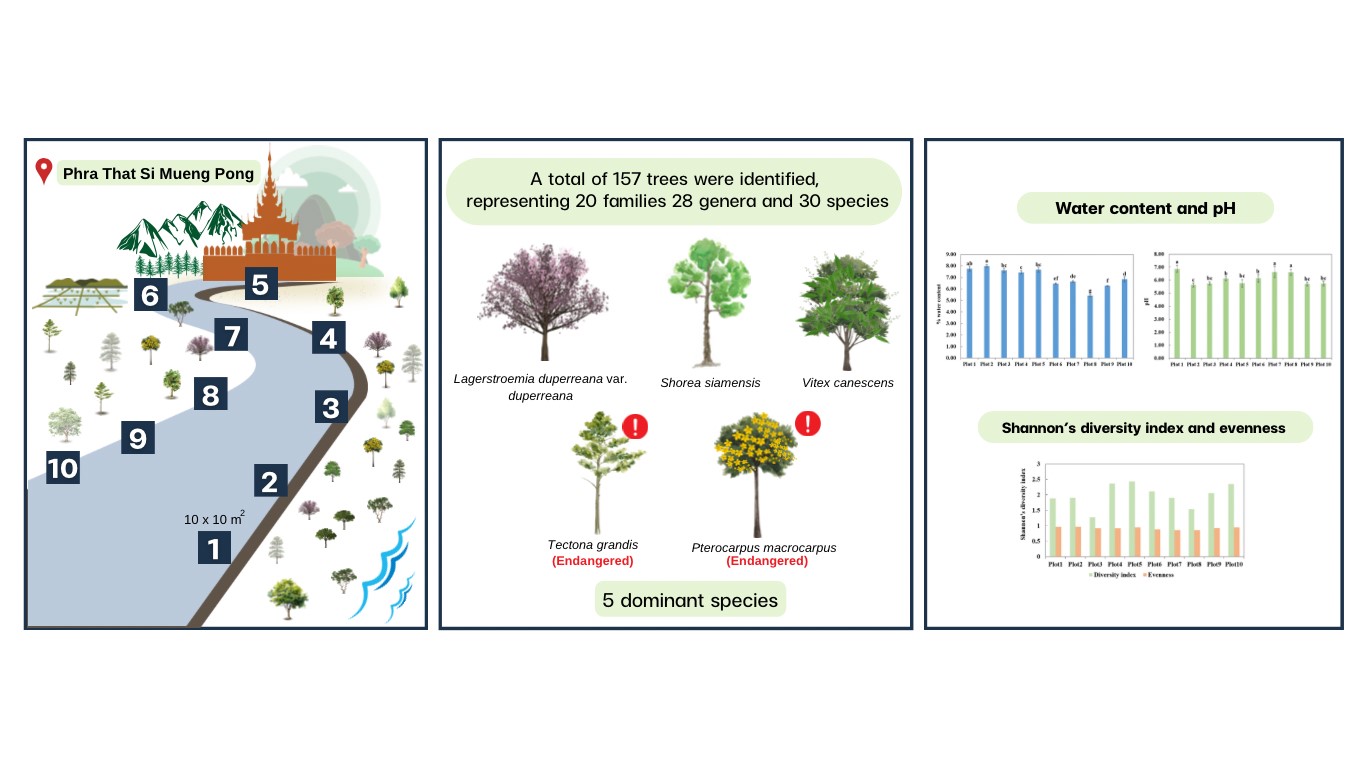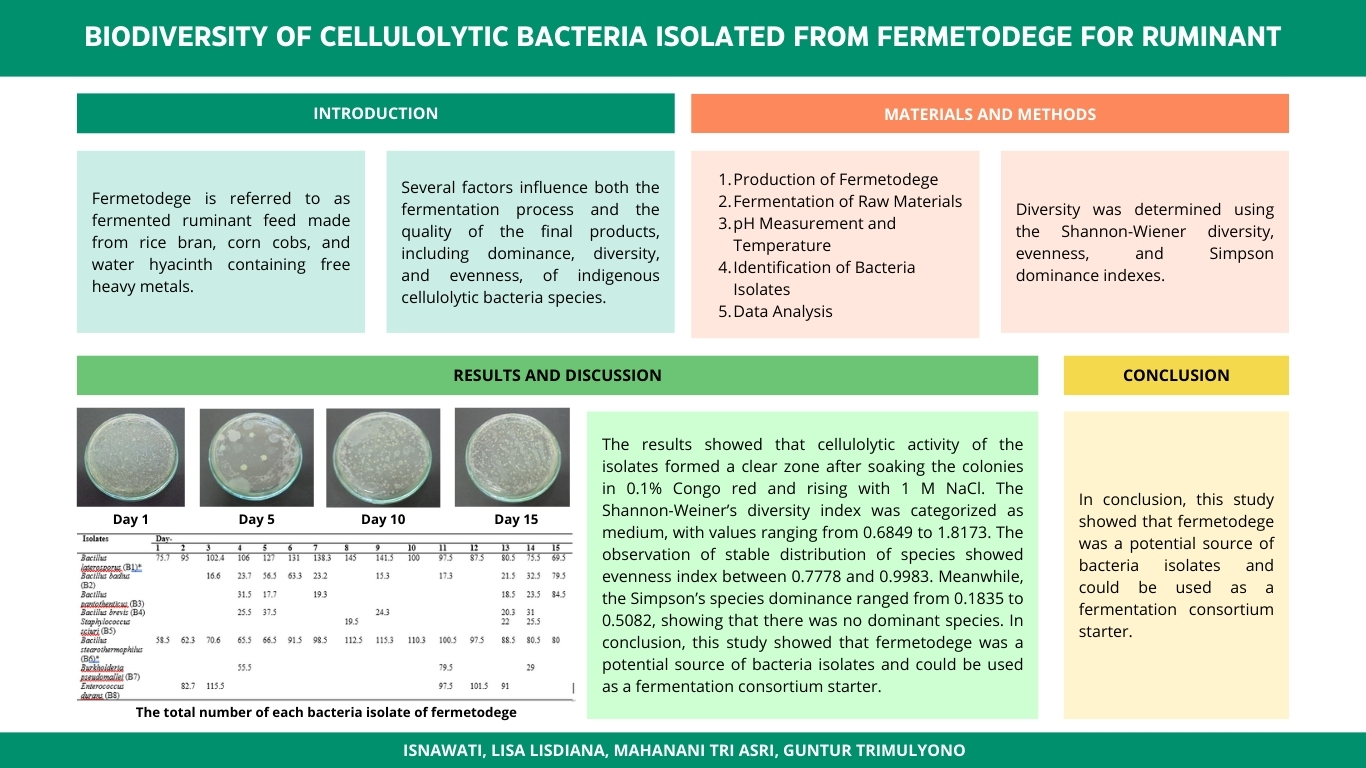DISTRIBUTION PATTERN AND DIVERSITY OF EPIPHYTIC ORCHIDS IN THE CURUG CIBEREUM PATH, MOUNT GEDE PANGRANGO, INDONESIA
Downloads
The Curug Cibereum path as a tourist attraction in the Mount Gede Pangrango area is dominated by a lush tree, making it a suitable place to find a diversity of epiphytic orchids. This study aimed to determine the distribution pattern and diversity of epiphytic orchids along the Curug Cibereum path which is influenced by environtmental parameters. The research method was carried out by plotting ten plots on the right and left sides of the path, with each plot measuring 500 x 5 m and the distance between plots was 100 m. The results showed that there were 31 species of epiphytic orchids from 12 genera. The distribution pattern of epiphytic orchids was mostly clustered except for Oberonia lotsyana, which had a uniform pattern. The epiphytic orchid species with the highest INP were Bulbophyllum gibbosum with an INP value of 35% and Coelogyne speciosa with an INP value of 20%. Species diversity (H ') was moderate (H '=2.54), the evenness index (E) was high (E=0.73), the dominance index (D) was low (D=0.13). The measurements of environmental parameters showed optimal conditions for the growth of epiphytic orchids, namely with a temperature of 24.5 oC, soil moisture of 76.5%, air humidity of 70%, pH 5.1, the light intensity of 6351 lux and wind speed of 0.03 m/s.
Downloads

This work is licensed under a Creative Commons Attribution-NonCommercial-NoDerivatives 4.0 International License.
Authors who publish with this journal agree with the following terms:
- Authors retain copyright and grant the journal right of first publication, with the work 1 year after publication simultaneously licensed under a Creative Commons attribution-noncommerical-noderivates 4.0 International License that allows others to share, copy and redistribute the work in any medium or format, but only where the use is for non-commercial purposes and an acknowledgement of the work's authorship and initial publication in this journal is mentioned.
- Authors are able to enter into separate, additional contractual arrangements for the non-exclusive distribution of the journal's published version of the work (e.g., post it to an institutional repository or publish it in a book), with an acknowledgement of its initial publication in this journal.
- Authors are permitted and encouraged to post their work online (e.g., in institutional repositories or on their website) prior to and during the submission process, as it can lead to productive exchanges, as well as earlier and greater citation of published work (See The Effect of Open Access).






























